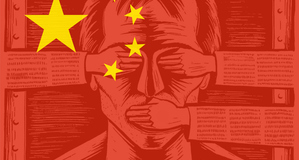Effects of Globalization on Work and Organizations: Exploring Post-Industrialism, Post-Fordism, Work and Management in the Global Era
By
2011, Vol. 3 No. 12 | pg. 1/2 | »
KEYWORDS:
As we move from Fordism to Post-Fordism and from Industrialism to Post-Industrialism, the new Market that prevails under Globalization implies many changes to the nature of work and organizations. This new Market dictates, or rather governs, the way corporations think and how workers are treated. It implies, among other things, arbitrariness in the workplace, pervading threat of termination, an increasingly wide gap between the rich and poor, job loss and a weakening of job security, and the rise of superstar CEOs. Thomas (2000) most aptly describes this: “The corporation ‘delayered’, throwing off entire levels of management; it ‘disaggregated’, ridding itself of its extraneous operations; it embraced ‘flexibility’, making it easier to replace career employees with (zero-benefit) temps; it ‘outsourced’ every possible piece of work to the lowest bidder; it ‘reengineered’ its various processes in a less labor-intensive way; it ‘disintermediated’, using new technology to cut out middle-men and move back-office jobs to wherever wages were lowest” (p191). Before describing the impact globalization has had on work and organizations, it may be useful to briefly speak about the central ideas of Post-Fordism and Post-Industrialism. Fordism refers to ideas and principles propagated by Henry Ford: mass production of uniform goods and a market for this, rigid technologies like the assembly line, unvarying work routines (Taylorism), and increasing productivity through economies of scale, deskilling and intensification (Ritzer, 2000). It is believed that Fordism began to decline in the 1970s, replaced by Post-Fordism. The distinctive characteristics of it are as follows: declining interest in mass products, growing interest in customized products, consumers willing to pay more for high quality and easily noticeable goods, shorter production runs, flexible production, flexible management, more capable workers with greater autonomy and responsibility, and greater differentiation in society and the workplace (Ritzer, 2000).It has also been argued, most famously by Daniel Bell, that we have moved from an industrial to a post-industrial society (Ritzer, 2000). Bell argues that focus has shifted from producing goods, like steel and automobiles, to producing services, like fast food and health. There has also been an increase in new technologies and in knowledge and information processing, while scientists, technicians and professionals are growing in number and importance. This means that creative knowledge workers will take over routinized workers. The post-industrial organization is characterized by: flattening in hierarchy, blurring of boundaries between organizations, an organization structure that is more integrated and less specialized, lack of rules to govern behavior, selection of employees based on their potential for creativity, and customized work and products. Ritzer (2000) argues that despite the fact that Post-Fordism and Post-Industrialism has emerged, there has been no clear break from either Fordism or Industrialism, as elements and aspects of it are still present in work, and even though it may be contradictory, they co-exist. Multinational corporations have begun to focus principally on brands and brand management, believing that while products are made in factories, a brand is made in the mind and bought by the consumer (Klein, 2000). A brand is an idea, a lifestyle, and an attitude. The result is innovative ad campaigns, superstores and corporate campuses, but also a change in the face of global employment. Superbrand companies focus on first creating the ‘soul’ of companies and then removing the burdensome bodies of employees, factories and machines. Making a superbrand is costly: after money is spent on sponsorships, ‘cool hunters’, ‘marketing maverns’, and branding, removing cumbersome bodies is crucial for cost effectiveness, or more clearly, profit. Priorities have changed; the logic of the new priority is not to spend money on machines that will rust, factories that need constant upkeep, and employees that will age and die; resources should be used on sponsorships, packaging, expansion, and advertising as it is this that will help to build superbrands. This increased resistance to investing in labor and factories has led to the inevitable devaluation of the production process, producers and employees. It was Team Nike that initiated the no-limits spending on branding, together with complete disinvestment in its workers. As Phil Knight says: “There is no value in making things any more. The value is added by careful research, by innovation and by marketing” (Klein, 2000, p197). Nike is the epitome of the product-free brand. Major companies embraced the very successful Nike model: “Don’t own any factories, produce your products through an intricate web of contractors and subcontractors, and pour your resources into design and marketing” (Klein, 2007, p285). Mass layoffs are necessary shifts in corporate strategy, the focus is on the needs of the brand over the workers. One company that followed the Nike model was Levis, with the same explanation: “The future belongs to companies that own little but sell much” (Klein, 2000, p200). But, factories do not disappear to rematerialize, they become something completely different: an ‘order’ placed with a subcontractor who in turn pushes it off to ten more subcontractors, who passes it on to workers who work from basements and living rooms. Because of this procedure, once the sub/contractors take out their own profit, all that is left is the worker – at the bottom of the chain – receiving a paltry paycheck: “When the multinationals squeeze the subcontractors, the subcontractors squeeze the workers” (Klein, 2000, p212). This change is so extreme that superbrands refuse to disclose locations of production sites, using competition as an excuse, and stating that they, like us, are “bargain hunters in search of the best deal in the global mall” (Klein, 2000, p202). But all they are interested in are materials, delivery dates, designs, and low prices, paying no attention to how low the prices are, the workers, or working conditions. To make the products for the superbrands to put their logo on, the free-trade or export-processing zones (EPZ) have emerged. An example is the Cavite EPZ, the largest trade-free zone in Philippines, which produces goods only for the export market. Klein (2000) states that production here has a worthless status, factories are unbrandable and producers are industrial untouchables, yet Cavite is one of the many EPZs that “presents itself as the buy-in-bulk Price Club for multinationals on the lookout for bargains” (p203). Life stops inside Cavite; it is a place of pure work, a tax-free economy zone, and a military state inside a democracy. While Philippines has 459000 workers in 52 zones, China has 18 million workers in 124 zones, in the world, there are about 1000 EPZs in 70 countries with 27 million workers: $200-250 billion worth of trade flow within these zones. The similarity of the workers lives within the EPZs are striking: long workday (12-16hours); young women workers working for sub/contractors from Korea, Taiwan, or Hong Kong; contractors filling orders for companies in US, UK, Japan or Canada; military-style management; abusive supervisors, below-subsistence wage; low-skill monotonous work; unstable contracts; migrant workers; and short term, unstable work. Workers are left penniless and homeless, feeling ‘alien’ in the factories, and ‘alien’ in that they come from faraway provinces. Sleep deprivation, malnutrition and homesickness combine to result in deep disorientation and alienation. This is, as Rose (1990) states, the basic alienation that lies at the heart of work: “Workers work because they have to, they work at the behest of others in a process they do not control, to produce goods or services they do not enjoy… work is made up of the elements of obedience, self-denial and deferred gratification” (p56). Fear and instability characterize these zones: governments fear loss of foreign factories, factories fear loss of superbrands, and workers fear loss of unstable jobs. The governments of poor countries thus offer 5-10 year tax breaks, lax regulations, their own workers with the lowest wage, and dirt-cheap rent: “a fantasyland for foreign investors” (Klein, 2000, p207). Because of the competitiveness of the global economy, 70 countries are competing for the EPZ dollar, and incentives increase at the expense of wages and standards. Thus, globalization puts pressure on the workers and the producers by weakening their bargaining power as a result of the increased competiton (Carr & Chen, 2001). Even though factories do not pay taxes or create infrastructure, they are there because of the trickle-down theory: the belief that EPZs create jobs and workers income from these jobs will boost the local economy. But, zone wages are so low, after money is spent on transportation, food and accommodation, workers cannot afford regular consumer goods. In addition, labor laws are not being enforced because governments regard EPZs as foreign trade policy, not a labor rights issue, and because they promised a cheap and compliant workforce to foreign investors, labor officials bend the rules in the zones. EPZ factories are run according to rules that break the country’s labor laws. The result is: highly monitored bathroom breaks, rules against talking (and smiling), no social security, no ‘real’ overtime, poor ventilation, lack of protection, and below-minimum wage. And, for the majority of young women working in these zones: pregnancy tests, mistreatment of pregnant women, forced abortions, contraceptive pills and condoms, and monthly ‘checks’. So, while the above corporations used the Nike model, other companies were using the Microsoft model: “maintain a tight control center of shareholder/employees who perform the company’s ‘core competency’, and outsource everything else to temps” (Klein, 2007, p285). Temporary workers and outsourced divisions began in Microsoft, where there is a two-tier workforce: at the center are permanent, full-time workers with benefits and stock options, and around this are the temporary workers, who provide the company with the flexibility to “expand and contract its workforce at will. ‘We use them,’ says Microsoft personnel officer Doug McKenna, ‘to provide us with flexibility and to deal with uncertainty.’” (Klein, 2000, p250). Thus, another effect of globalization on work and organizations, another result of the ‘brands, not products’ revelation, and another way of cutting ties to the workforce: the upsurge of temporary contracts. Despite the rapid increase in service and retail jobs, large employers treat these workers as ‘not quite legitimate’, believing their jobs are hobbies and their paychecks are not really needed. As a result, ‘joke’ jobs have emerged: “notoriously unstable, low-paying and overwhelmingly part-time” (Klein, 2001, p232). Employers attempt to reinforce transience in workers so wages can remain low, there is little opportunity for mobility, and working conditions remain bad, while profits increase. But, workers have realized there is no transience, as there is no dream job waiting for them: “it’s a stepping stone to a big sinkhole” (Klein, 2000, p236). The unhappiest workers are those working for the biggest brands. McDonalds McJob for example has been described as a low skill, low pay job, stressful and very unstable. Thus, what multinational corporations have done, according to Klein (2000), is sharply reduce their responsibilities at “both the production and service ends of the economic cycle” (p237). Even though you cannot compare the workers at EPZ with the retail workers, it is the pattern of work that is similar. That is, by generally using young workers, corporations are legitimizing their disposable jobs and low wages: workers are just passing through, no one really ‘depends’ on these wages, and wages do not support families. As in the zones, the youthfulness of the workers in the retail sector is a purposeful choice of corporations who consistently hire younger workers and layoff older workers. Companies are rapidly expanding to become the dominant one in their market and while employees wages remain low or decrease, these employees are the ones creating the profit used for expansion, which is given priority over workers wages. Thus, as Klein (2000) states: “It is one of the paradoxes of service-sector employment that the more prominent a role it plays in the labour landscape, the more the casual service-sector companies become in their attitude toward providing job security” (p242). The service sector has different ideas and agendas when it comes to part-time or temporary work; they see it as a way to avoid benefits and overtime, keep wages low, and evade commitment, finding innovative ways to make the most of their ‘almost full-time’ employees, reducing their hours and at the same time maximizing their efficiency and productivity. Moreover, by hiring workers on temporary contracts, companies are bypassing the laws that provide benefits to workers and that prevent them from firing without cause. The nature of temporary work is also changing, in that it is no longer temporary. Agencies now provide companies who do not want to commit to full-time workers, the opportunity to staff entire functions and divisions with temporary workers, as well as carrying out the administration and management of the task, allowing companies to focus their time, energy and resources on the core business. A new idea is that individuals should, to be successful and empowered, create the ‘Brand Called You’ and think of themselves as service providers, creating a ‘Free Agent Nation’ (Klein, 2000). Yet, there is a large difference in the experience and wages of temporary workers higher up on the income scale and those at Microsoft or at an EPZ. For the latter, according to Klein (2000), temporary work is “the worst of both worlds: monotonous work at lower wages, with no benefits or security and even less control over scheduling” (p254). While, temporary work may mean better money, working at your own terms and a balance of work and personal life for some, it has no benefits for the most vulnerable workforce, putting them at a great risk. In addition, there are the ‘Temp CEOs’ who move between multinational companies, earning multimillion dollar packages on the way in and out. As Klein (2000) states, these are the two extremes of temporary workers: “the contractor in Cavite afraid of flying factories, and the temp CEO unveiling restructuring plans New York” (p255). And, while the CEO ‘superstars’ carry out downsizing, mergers and mass layoffs that increase their success (and paychecks), they do so at the detriment of the broader workforce. For example, CEO George Fisher of Kodak cut 20,100 jobs and received a $60 million grant, and Sanford Wiell of Travelers earned $230 million in 1997, despite a merger and a loss of thousands of jobs. So, while “workers work harder, their employers can be more successful, but… the link between overall economic success and the guaranteed sharing in that success is weaker than ever before” (Klein, 2000, p257).Continued on Next Page » Suggested Reading from Inquiries Journal
Inquiries Journal provides undergraduate and graduate students around the world a platform for the wide dissemination of academic work over a range of core disciplines. Representing the work of students from hundreds of institutions around the globe, Inquiries Journal's large database of academic articles is completely free. Learn more | Blog | Submit Latest in International Affairs |
















